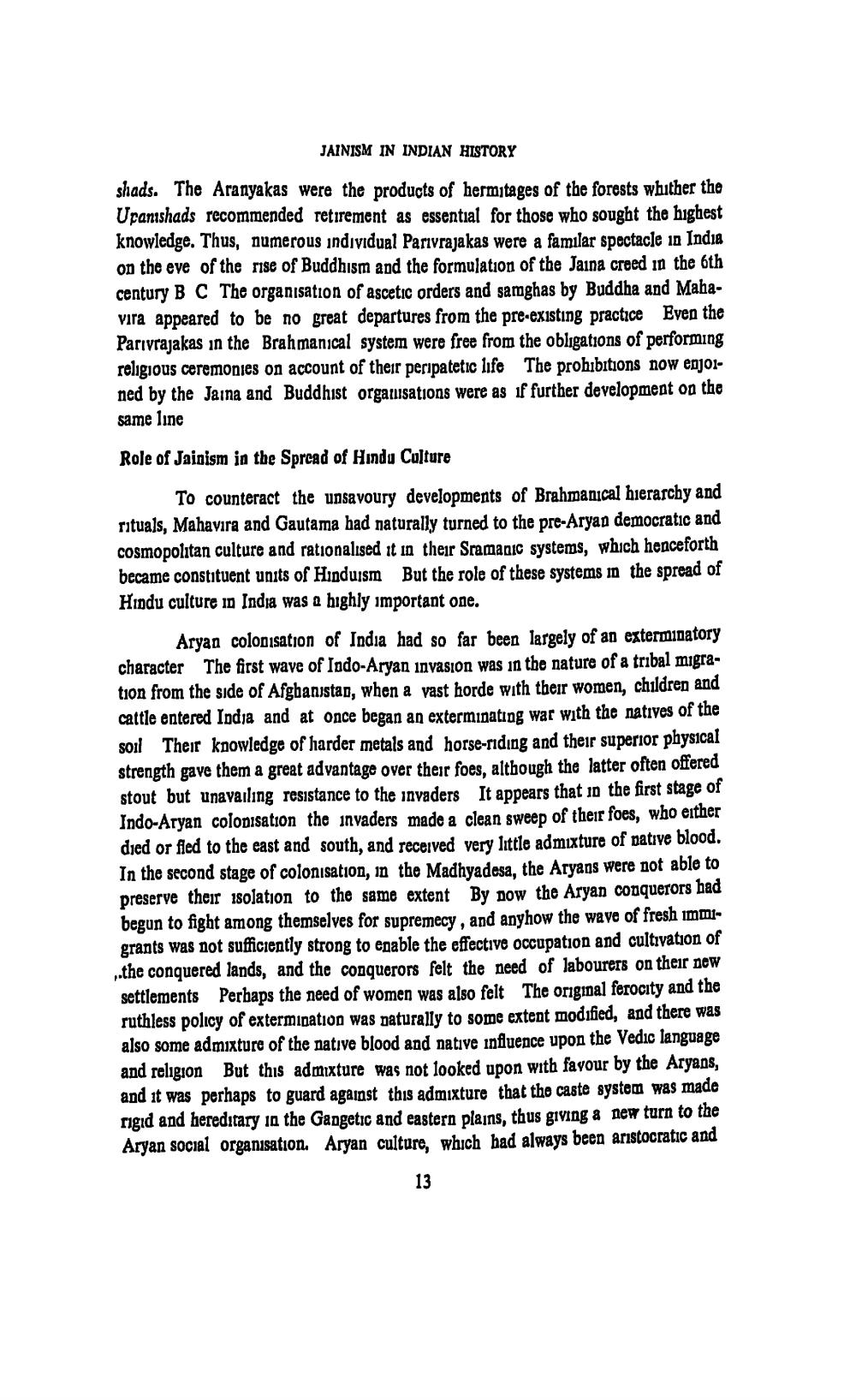________________
JAINISM IN INDIAN HISTORY
shads. The Aranyakas were the products of hermitages of the forests whither the Upanishads recommended retirement as essential for those who sought the highest knowledge. Thus, numerous individual Parivrajakas were a familar spectacle in India on the eve of the rise of Buddhism and the formulation of the Jaina creed in the 6th century BC The organisation of ascetic orders and samghas by Buddha and Mahavira appeared to be no great departures from the pre-existing practice Even the Parıvrajakas in the Brahmanical system were free from the obligations of performing religious ceremonies on account of their peripatetic life The prohibitions now enjo1ned by the Jaina and Buddhist organisations were as if further development on the same line
Role of Jainism in the Spread of Hindu Culture
To counteract the unsavoury developments of Brahmanical hierarchy and rituals, Mahavira and Gautama bad naturally turned to the pre-Aryan democratic and cosmopolitan culture and rationalised it in their Sramanic systems, which henceforth became constituent units of Hinduism But the role of these systems in the spread of Hindu culture in India was a highly important one.
Aryan colonisation of India had so far been largely of an exterminatory character The first wave of Indo-Aryan invasion was in the nature of a tribal migration from the side of Afghanistan, when a vast horde with their women, children and cattle entered India and at once began an exterminating war with the natives of the soil Their knowledge of harder metals and horse-riding and their superior physical strength gave them a great advantage over their foes, although the latter often offered stout but unavailing resistance to the invaders It appears that in the first stage of Indo-Aryan colonisation the invaders made a clean sweep of their foes, who either died or fled to the east and south, and received very little admixture of pative blood. In the second stage of colonisation, in the Madhyadesa, the Aryans were not able to preserve their isolation to the same extent By now the Aryan conquerors bad begun to fight among themselves for supremecy, and anyhow the wave of fresh immigrants was not sufficiently strong to enable the effective occupation and cultivation of the conquered lands, and the conquerors felt the need of labourers on their new settlements Perhaps the need of women was also felt The original ferocity and the ruthless policy of extermination was naturally to some extent modified, and there was also some admixture of the native blood and native influence upon the Vedic language and religion But this admixture was not looked upon with favour by the Aryans, and it was perhaps to guard against this admixture that the caste system was made rigid and hereditary in the Gadgetic and eastern plains, thus giving a new turn to the Aryan social organisation. Aryan culture, which had always been aristocratic and
13




